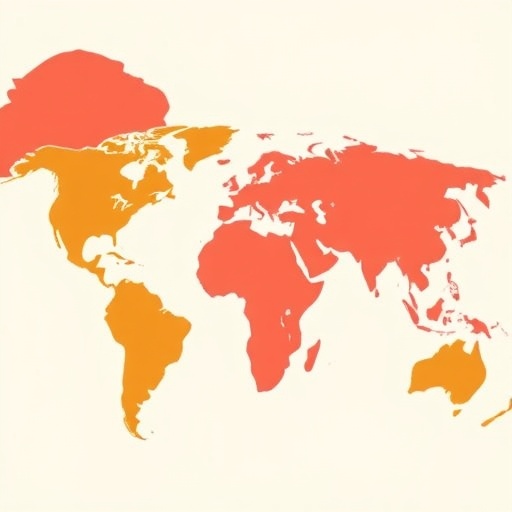In an increasingly interconnected world, the role of human resource management is evolving to align with sustainable development goals (SDGs). Recent research by Vandy and Mohanty highlights how specific practices in Green Human Resource Management (GHRM) in India and Sierra Leone can serve as essential catalysts for the localization of these SDGs. The study meticulously analyzes the distinctive GHRM practices in these two nations, underscoring their potential impact on achieving sustainability objectives that resonate on a global scale.
To understand the gravity of this research, it is crucial to grasp the core principles of GHRM. Green Human Resource Management goes beyond traditional HR practices by incorporating environmental concerns into the overall HR strategy. This entails not only the recruitment and selection of environmentally conscious employees but also the promotion of green practices throughout the organizational structure. Vandy and Mohanty illuminate how these practices can catalyze a more sustainable framework for both India and Sierra Leone, addressing unique challenges while fostering local engagement with SDGs.
India, being one of the fastest-growing economies with a myriad of environmental issues, presents a unique case for the implementation of GHRM. With a population that heavily relies on natural resources, the environmental impact of industrial growth necessitates a shift towards sustainability. The research highlights various initiatives being adopted by companies in India that integrate GHRM practices. These include training programs aimed at fostering environmental awareness among employees and policies that encourage sustainable practices both at the workplace and beyond.
Conversely, Sierra Leone faces a different set of challenges. Emerging from a tumultuous history marked by civil conflict, the nation is at a critical juncture in its quest for sustainable development. The introduction of GHRM practices can play a vital role in reshaping its business environment while aligning with global sustainability objectives. The study discusses how local enterprises can benefit from adopting GHRM, as it can enhance their operational efficiency and corporate social responsibility, leading to broader economic benefits for the country.
The synthesis of GHRM practices from these two countries draws attention to the concept of localization of SDGs, which involves customizing global goals to meet local needs and circumstances. Vandy and Mohanty pinpoint that while SDGs provide a universal framework, their successful implementation often hinges on how well they are adapted to the local context. In India, tailoring GHRM practices to fit the cultural and socio-economic landscape can lead to improved employee engagement and sustainability outcomes. In Sierra Leone, GHRM can be a vehicle for rebuilding trust in businesses post-conflict by emphasizing environmental stewardship.
Moreover, the implications of understanding GHRM practices extend beyond the immediate context of India and Sierra Leone. The study suggests that the findings can serve as a model for other developing nations that share similar challenges concerning sustainable development. By illustrating how localized GHRM practices can align with global sustainability efforts, the research provides valuable insights into creating robust strategies that can lead to meaningful progress towards the SDGs.
As industries across different sectors begin to recognize the importance of sustainability, this research highlights the urgent need for an integrated approach to GHRM. Companies are encouraged to foster a culture of sustainability that can have far-reaching impacts. In practical terms, businesses need to assess their current HR strategies and integrate environmental considerations, ensuring that each aspect of human resource management contributes towards achieving sustainability goals.
Furthermore, the study emphasizes the role of government policies in reinforcing GHRM practices. By designing regulations that promote environmental responsibility, governments can facilitate an environment where green initiatives thrive. This is particularly pertinent for countries like India and Sierra Leone, where regulatory frameworks can directly impact the adoption of sustainable practices in businesses, ultimately driving SDG localization.
In summary, Vandy and Mohanty’s research unveils vital insights into the intersection of GHRM and sustainable development in India and Sierra Leone. Their thoughtful analysis provides a framework for understanding how cross-national differences can inform GHRM practices and influence the localization of SDGs. This cross-country analysis not only underlines the diverse paths nations can take toward sustainability but also emphasizes the pivotal role that human resource management plays in shaping these trajectories.
As the world seeks pathways to sustainability, the implications of this research urge stakeholders across continents to recognize the importance of adapting GHRM practices to local contexts. The need for innovative, sustainable approaches has never been more critical, and through the lens of GHRM, companies can effectuate change that resonates on a global scale.
In conclusion, the cross-national analysis by Vandy and Mohanty serves as a clarion call for businesses, policymakers, and professionals to champion the virtues of GHRM as a significant strategy for achieving the Sustainable Development Goals. The localization of SDGs through such innovative practices can pave the way toward a more sustainable and resilient future for nations navigating the complexities of environmental challenges.
Subject of Research: Green Human Resource Management practices and their role in Sustainable Development Goal localization.
Article Title: Cross-national analysis of GHRM practices in India and Sierra Leone as a catalyst for SDG localization.
Article References:
Vandy, J.F., Mohanty, S. Cross-national analysis of GHRM practices in India and Sierra Leone as a catalyst for SDG localization.
Discov Sustain 6, 1230 (2025). https://doi.org/10.1007/s43621-025-01891-6
Image Credits: AI Generated
DOI: https://doi.org/10.1007/s43621-025-01891-6
Keywords: Green Human Resource Management, Sustainable Development Goals, India, Sierra Leone, localization, environmental sustainability, cross-national analysis.




